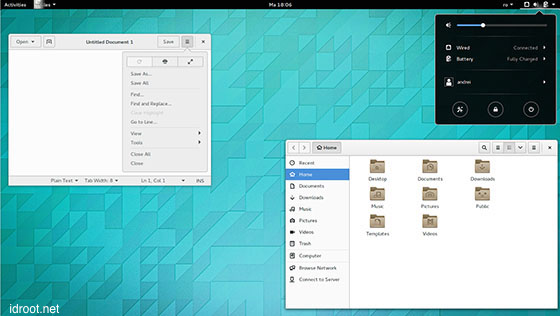
In this tutorial, we will show you how to install GNOME on Ubuntu 14.04. By default, Ubuntu 14.04 Trusty Tahr LTS server was installed as minimal without any Graphical Desktop support. Installing the GNOME desktop on Ubuntu is fairly straightforward. Most Ubuntu servers are run on CLI (Command-Line Interface) mode. But in some cases, one may need to have a desktop to install some applications with GUI (Graphic User Interface) mode. In this case, we will use GNOME, the most popular user-friendly desktop for any UNIX-based system.
This article assumes you have at least basic knowledge of Linux, know how to use the shell, and most importantly, you host your site on your own VPS. The installation is quite simple. I will show you the step-by-step installation of GNOME on Ubuntu 14.04.
Prerequisites
- A server running one of the following operating systems: Ubuntu 14.04, and any other Debian-based distribution like Linux Mint.
- It’s recommended that you use a fresh OS install to prevent any potential issues.
- SSH access to the server (or just open Terminal if you’re on a desktop).
- A
non-root sudo useror access to theroot user. We recommend acting as anon-root sudo user, however, as you can harm your system if you’re not careful when acting as the root.
Install GNOME on Ubuntu 14.04
Step 1. First, You just need to install a couple of Gnome apps, add the gnome3-staging repository and do a dist-upgrade:
sudo add-apt-repository ppa:gnome3-team/gnome3-staging sudo apt-get update sudo apt-get dist-upgrade
Step 2. Installing additional applications.
GNOME 3.12 has some new applications like gnome-weather, gnome-maps, gnome-photos and gnome-music, etc, which are not installed by default on Ubuntu GNOME 14.04. To install additional applications, run the following command:
sudo apt-get update sudo apt-get install bijiben polari gnome-clocks gnome-weather gnome-maps gnome-music gnome-photos gnome-documents gnome-contacts epiphany-browser gnome-sushi gnome-boxes gnome-shell-extensions
Step 3. Reboot the system.
After you reboot the system, the system will enter into the Gnome GUI interface automatically.

If you encounter issues of you simply don’t like GNOME 3.12, you can revert the changes by using PPA Purge. To purge the GNOME 3 PPAs and go back to GNOME 3.10 (which is the default in Ubuntu 14.04), use the following commands:
sudo apt-get install ppa-purge sudo ppa-purge ppa:gnome3-team/gnome3 sudo ppa-purge ppa:gnome3-team/gnome3-staging
Congratulations! You have successfully installed GNOME. Thanks for using this tutorial for installing GNOME in Ubuntu 14.04 system. For additional help or useful information, we recommend you to check the official GNOME website.